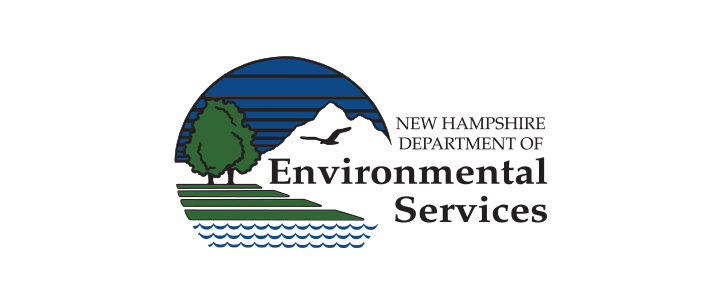
2020 Drought: Behind the Scenes
NHDES had been carefully tracking the development of drought conditions since the spring. Due to a low snowpack and below normal precipitation, by the end of May, abnormally dry conditions developed across the state. Dry conditions persisted and a month later, approximately 70% of the state was experiencing moderate drought conditions — the first of four stages of drought (D1-D4) classified by the U.S. Drought Monitor. Over the summer, drought has persisted or intensified in some regions of the state, while in other regions localized storms relieved drought conditions, but only temporarily as more hot and dry weather followed. At “press” time, the entire state was categorized as experiencing drought, 73% of the state was categorized as experiencing “severe drought” (D2) and 19% of the state was categorized as experiencing “extreme drought” (D3). Some relief appeared to be in sight, with rain forecast over the next few days and the 8- to 14-day precipitation outlook favoring above normal precipitation. In comparison to the conditions of the 2016 drought during the same time period and at its peak intensity, the current drought is more severe and widespread. In 2016, heavy rains at the end of October helped to improve drought conditions, but the majority of the state transitioned into winter in a drought. The U.S. Seasonal Drought Outlook predicts drought conditions to decrease in intensity, but like in 2016, persist across the majority of the state into winter.
While drought impacts became more apparent in September, with stream flows down to a trickle in many areas, reservoirs levels below normal, and reports of private well shortages, NHDES staff from across the Water Division and New Hampshire Geological Survey worked steadily behind the scenes to manage impacts on drinking water supplies, recreation and aquatic life. To minimize impacts on lake levels through the summer, the NHDES dam operations team held back more water earlier in the season when drought was looming. When portions of the Lamprey and Souhegan Rivers incurred particularly low flows, the Instream Flow Program coordinated with water users in those watersheds to implement management plans to protect flows, including a release of water from dams on the Lamprey River to provide relief to aquatic organisms. When drought conditions emerged and the majority of the 31 monitoring wells across the state began to drop below normal, NHDES held Large Groundwater Withdrawal Permit holders to permit conditions related to reducing withdrawals during drought and urged community water systems and municipalities to implement outdoor water use restrictions. To date, 166 community water systems and seven municipalities have implemented restrictions. NHDES has also been leading the state’s Drought Management Team and if more severe impacts arise, NHDES will work with partners on the team to coordinate additional actions including an emergency response if needed. For the latest information on drought conditions and management in New Hampshire, see the Drought webpage.




